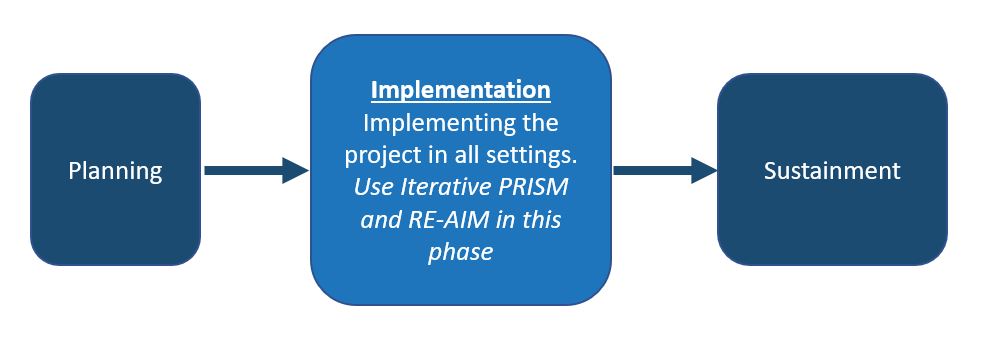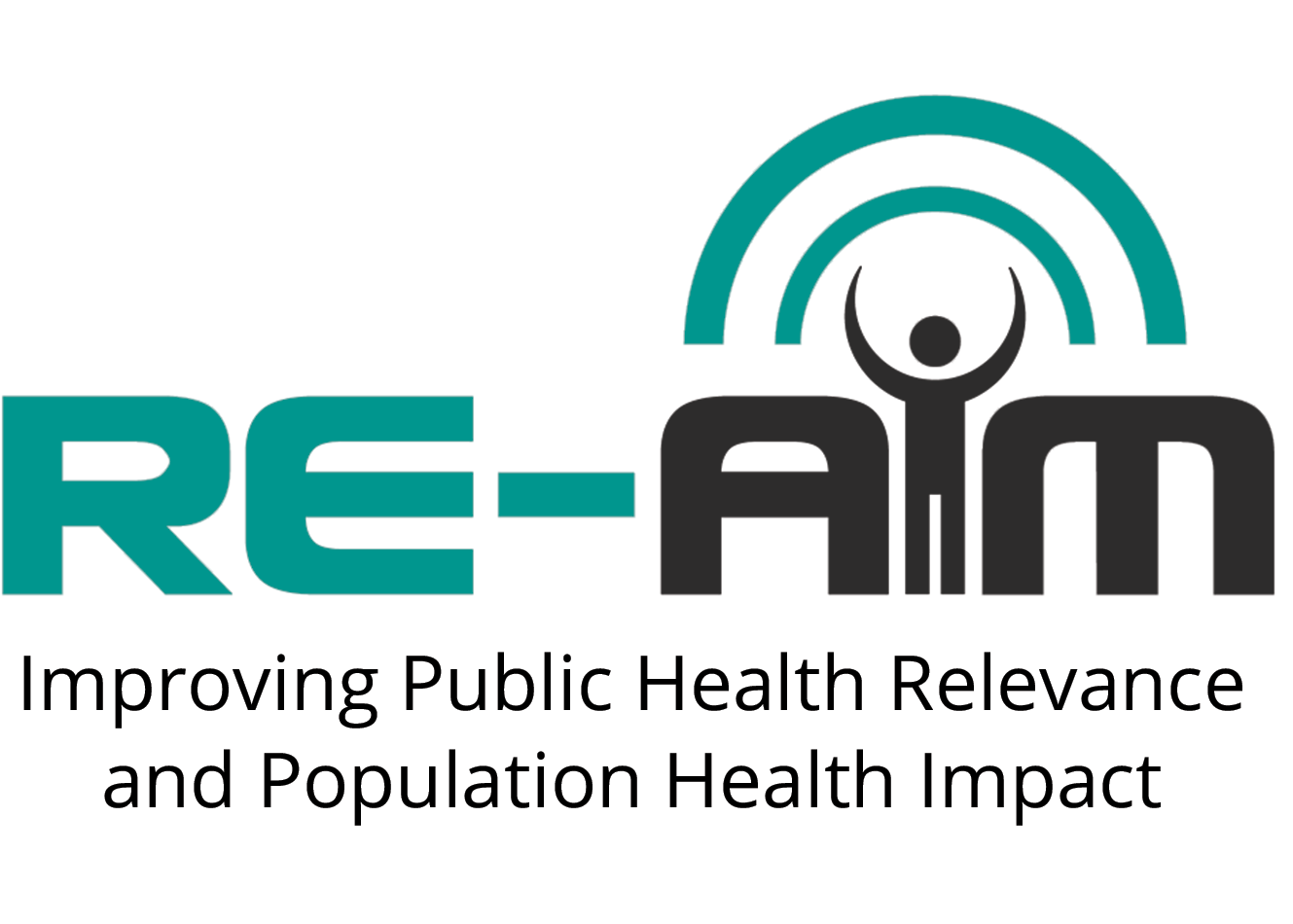Use of Iterative PRISM and RE-AIM During Implementation
Why use Iterative PRISM and RE-AIM during implementation?
The implementation phase is where most of the work happens. This is when project delivery begins in one or more setting, taken up (or not) by staff, and provided to recipients. The implementation phase is also known as the midstream or implementing phase. During this phase, adaptations to the original project or implementation plans occur very frequently. A balance is needed between preserving fidelity to the original intent, key functions, or goals of the project and its implementation and guiding appropriate adaptations to improve the fit with your setting, culture, resources, and clientele.
Iterative use of PRISM and RE-AIM can occur multiple times during this phase to help periodically assess progress, measure outcomes and context, and direct next steps in implementation (e.g., adaptations to the project or its delivery, use of implementation strategies to reduce barriers to specific outcomes).
What tools does this website have for using RE-AIM during the Implementation Phase?
Two assessments—one for PRISM domains and one for RE-AIM outcomes—are provided in the Iterative PRISM and RE-AIM Guidebook appendix (appendices 2.a, 2.b, 5.a, and 5.b) for use during the implementation phase. We strongly encourage these be used together, but in some projects, using only PRISM assessments or only RE-AIM assessments may be appropriate.
Please see this reference for more information: Use of reach, effectiveness, adoption, implementation, and maintenance (RE-AIM) framework to guide iterative adaptations: Applications, lessons learned, and future directions


Implementation Phase of Projects

